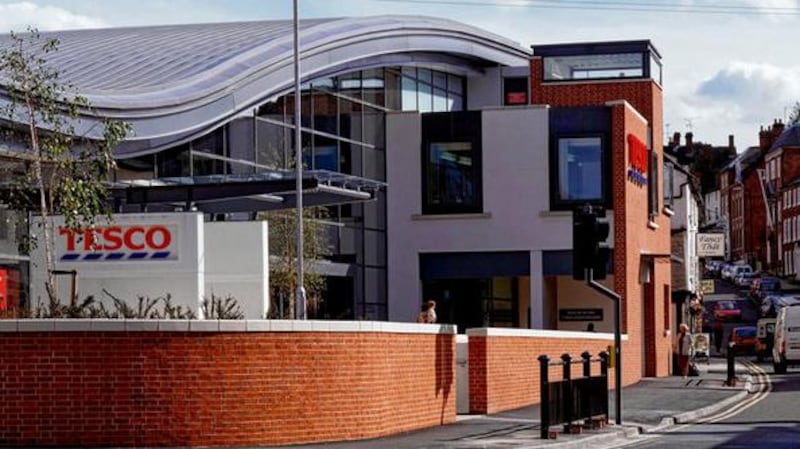Developers are being told that they must pay attention to the Department of the Environment’s new Retail Design Manual and the guidance it gives on selecting sites for shopping schemes – otherwise they risk refusal from the planning authorities.
The manual puts flesh on the bones of a revised set of retail planning guidelines which, while allowing larger stores, puts the emphasis on developing “brownfield” sites in urban core areas, rather than favouring potentially damaging out-of-town developments.
“Developers are recommended to base their site selection procedures around the principles in this manual,” it says after setting out a raft of design advice on how to integrate new retail schemes into historic cities and towns, citing successful examples in Ireland and elsewhere.

Skilled practitioners
“At a minimum, developers should provide an illustrated report setting out how the development proposed meets with the principles set out in this manual, and how it complies with relevant development plan or local area plan objectives and policies,” the manual says.
Though frequently repetitious, its intent is clear – to lay down what it calls the “key principles of urban design which might form the framework for policies to promote quality design in development plans and local area plans” throughout the State.
But the manual “is not a do-it-yourself guide to designing new retail development. As stated in the Guidelines, design needs to be applied by skilled practitioners, and there is no substitute for engaging the right skills to achieve successful outcomes.
“Good design is a sound investment in terms of return for developers, turnover for traders and a more attractive environment for shoppers; on the other hand, low design standards and poor construction quality impose long-term costs on their owners, users and society at large.
“The delivery of a high-quality development, and successful retail development in particular, requires first and foremost a clear vision and design brief, plus a commitment to an overall quality agenda shared by planning authorities, developers and designers.”
This should be helped by a key recommendation in the guidelines that planning authorities “request applicants to submit design statements for major retail proposals, and for development located in sensitive areas of cities, towns and villages”. In other words, no more boxes.
In dealing with “big box” proposals, the manual calls for “creative design solutions”, saying negative streetscape impacts “can be avoided by wrapping the large floorplates with complementary streetfront units such as hairdressers, cafes, bookshops and suchlike”.
On car parking, it suggests that this should be located “above or below retail floor space”, rather than on the surface, where it “should be to the rear and not exposed to view from the street frontage, so as not to detract from the quality of the urban environment.
“The quantum of car parking provided in new development should be limited to discourage unnecessary car use; and it should be designed to serve not only the development itself, but also other uses in its locality . . . in line with the Government’s Smarter Travel strategy.”
The manual, compiled by Paul Keogh Architects and planning consultants John Spain Associates, seeks to “emphasise the positive” rather than criticise past failures, but says the lessons are clear and require a “step-change in the quality of new retail development”.
Among the exemplary schemes cited by the authors is Athlone Town Centre, with its “diverse mix of uses”, including apartments and townhouses, restaurants and cafes, creche, primary healthcare facility and an 11-storey hotel “heralding the commercial centre of town”.
The development, designed by Murray O’Laoire Architects, “has provided significant opportunities for large multiples to enter Athlone, through provision of four major department store anchor units, and has acted as a catalyst for further investment in the town”.
Owen O’Callaghan’s Opera Lane scheme in Cork, linking Patrick Street with the Opera House, is hailed by the manual as a “testament to how contemporary architectural design can work sympathetically . . . and still deliver across a range of consumer and commercial criteria”.
In Westport, meanwhile, “pro-active town management, combined with good planning, aesthetic control, public realm improvements and co-operation between all the town’s stakeholders have boosted the local economy and enhanced Westport’s attractiveness”.
‘Best practice’
Three new supermarkets – Dunnes, Lidl and Tesco – had been slotted into edge-of-centre locations to “complement the town-centre SuperValu” and this diversity “supports a cross-fertilisation between the supermarkets and the healthy, indigenous town centre traders”. The manual cites a Tesco supermarket in Ludlow, Shropshire, as “a classic example of best practice in bringing vital supermarket retailing into the town in a manner that is sensitive to its social and physical context, and unique sense of place of the historic town centre”.
The biggest plaudits are for Princesshay, an award-winning retail-led regeneration project in Exeter, Devon. It was designed around a series of streets and squares linking old and new and is widely acknowledged as “a model of best practice in environmental responsibility”.
The Retail Design Manual is available from the Government Publications Sales Office, Molesworth Street, Dublin 2, for €5.75


